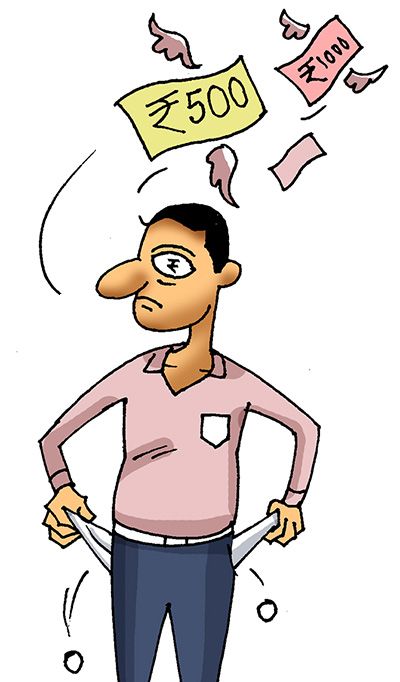What surprises will the finance ministry and the RBI spring on us next?
Put on your thinking caps and predict the next boomerang coming our way!
 In the 42 days since demonetisation, the government and the Reserve Bank of India have performed 59 U-turns, saying one thing one day, changing it in the days that followed.
In the 42 days since demonetisation, the government and the Reserve Bank of India have performed 59 U-turns, saying one thing one day, changing it in the days that followed.
Leaving most Indians confused about what to do.
The latest boomerang the finance ministry hurled was its diktat on Monday, December 19, that no one would be allowed to deposit over Rs 5,000 in scrapped 500 and 1,000 rupee notes more than once.
This after both the prime minister and finance minister told the country that there was absolutely no need to rush to the banks and we had up to December 30 to deposit these scrapped notes.
Monday's edict came with a demand that all deposits must be accompanied by a written reason explaining the delay in depositing these funds.
Yogendra Yadav, the distinguished political scientist, put it best in a note to his bank that went viral.
Another Indian revealed last night on Twitter that when he wrote that the delay was because he trusted what the prime minister and finance minister said, the bank manager refused at first to accept that explanation and tried to persuade him to instead cite a busy schedule as the reason.
It was only when he insisted that his explanation be accepted that the bank manager reluctantly accepted the form.
Columnist Rajeev Sharma points out that the process to deposit these notes involves the following steps:
- You have to give a written application to the bank about the deposit of Rs 5,000 or more, giving a reason why you didn't deposit it earlier and the reason for the delay.
- The same application to be attached with a copy of your Aadhar card even though the cash is being deposited in your own account.
- After this the bank will give you another printed form where you have to give complete details of your account, ID, denomination of cash and reply to two questions: a. why the delay in depositing the amount, and b. the sources of the amount being deposited.
- Once you complete this process, this will have to be verified by two bank officials.
- After the verification process is over, you have to produce your cash deposit slip which has to be presented to another official who will check your account details and enter the details of this transaction in a separate register and enter the serial number on the register and authenticate it.
- After this is done, you then move to the cash counter with all the documents and cash. The cashier will first satisfy himself that your entire paper work is in order and then your cash will be deposited.
On an average, says Rajeev, this entire process takes at least 45 minites provided there are no queues and all your documents are in order.
Interestingly, he adds, the banks already had these printed forms, indicating that the Reserve Bank of India had done its homework much in advance.
On Wednesday afternoon, in yet another turnaround, PTI reports that the RBI 'modifies old currency deposit rules; fully KYC compliant account holders can deposit over Rs 5,000 without any questions asked.'
What surprises will the finance ministry and the RBI spring on us next?
Put on your thinking caps and predict the next boomerang coming our way!
Please post your predictions in the message boards below.










